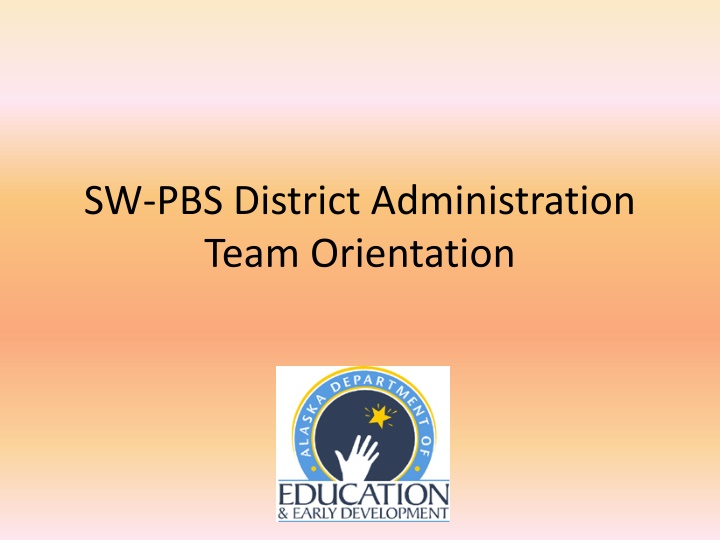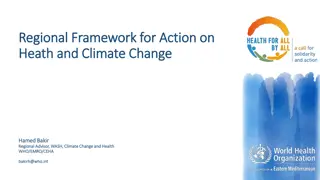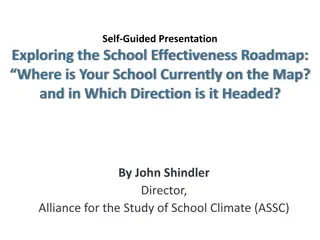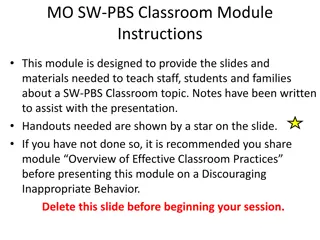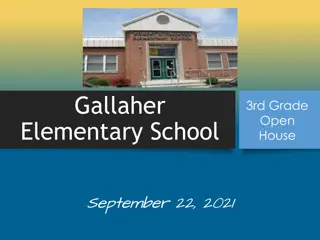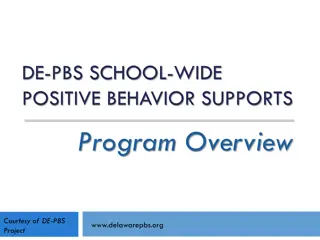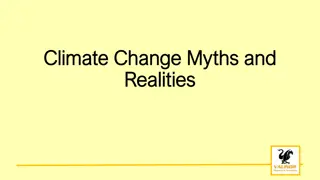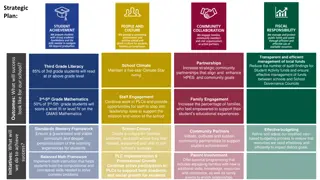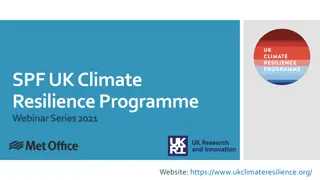Implementing SW-PBS Framework for Positive School Climate and Student Success
This content provides insights into implementing the SW-PBS framework in schools to support positive school climate, cultural inclusivity, academic success, and behavioral health. It covers key stages of implementation, eight steps for Tier One implementation, emphasizing social competence and academic achievement, and strategies for prevention and intervention at different student behavior levels. The content emphasizes the importance of leadership, data-driven decisions, staff support, and student behavior practices in creating a holistic system for student well-being and success.
Download Presentation

Please find below an Image/Link to download the presentation.
The content on the website is provided AS IS for your information and personal use only. It may not be sold, licensed, or shared on other websites without obtaining consent from the author.If you encounter any issues during the download, it is possible that the publisher has removed the file from their server.
You are allowed to download the files provided on this website for personal or commercial use, subject to the condition that they are used lawfully. All files are the property of their respective owners.
The content on the website is provided AS IS for your information and personal use only. It may not be sold, licensed, or shared on other websites without obtaining consent from the author.
E N D
Presentation Transcript
SW-PBS District Administration Team Orientation
School Supports Positive School Climate / Culture Family/ Community Behavioral Health *developed by EED in collaboration with HSSDBH
Academics Student Success Home Social Emotional Cultural *developed by EED in collaboration with HSSDBH
Visibility Political Support Funding District Leadership Team State Support Active Communication School Leadership Team Data/ Evaluation Training Coaching
STAGESOF IMPLEMENTATION 2-3 yrs Exploration/Ado ption Installation Initial Development Commitment Implementation Full Establish Leadership Teams, Set Up Data Systems Implementation Innovation and Sustainability Provide Significant Support to Implementers Embedding within Standard Practice Improvements: Increase Efficiency and Effectiveness Should we do it? Doing it right Doing it better www.pbis.org
Eight steps to Tier One Implementation 1. 2. 3. 4. 5. 6. 7. 8. Establish a school-level SW-PBS Leadership Team. School-behavior purpose statement. Set of positive expectations and behaviors. Procedures for teaching school-wide expected behaviors. Procedures for teaching classroom wide expected behaviors. Continuum of procedures for encouraging expected behaviors. Continuum of procedures for discouraging rule violations. Procedures for on-going data-based monitoring and evaluation. www.pbis.org
Social Competence & Academic Achievement What does SW-PBS Emphasize? OUTCOMES Supporting Decision Making Supporting Staff Behavior PRACTICES Supporting Student Behavior www.pbis.org
Tertiary Prevention: Specialized Individualized Systems for Students with High-Risk Behavior Individualized Supports ~5% Early ~15% Identification / Referral Secondary Prevention: Specialized Group Systems for Students with At-Risk Behavior Primary Prevention: School-/Classroom- Wide Systems for All Students, Staff, & Settings Leadership/ Support Behavioral Expectations ~80% of Students Infrastructure Development Readiness School Infrastructure Adapted for EED from PBIS.org
Diagnostic Individualized supports Screening Evidence-Based Practices Types of Supports/ Services by Tier Small group Social skills Data based decision making Substance abuse Bullying Suicide prevention Teen dating violence Risky sexual behaviors Domestic violence Trauma Academic Supports School-wide behavior supports
Leadership teams District School Responsible for student and building wide SW-PBS planning and implementation SW-PBS school leadership team should remain small (3-8 members) Consider representatives that include: administration, general education teachers, special education teachers, guidance, specials teachers, parents Responsible for district wide commitments and SW-PBS planning School Administrative Team must be committed to SW- PBS and actively participate on the team
Administrations Roles and Responsibilities ALL administrators are encouraged to participate in the process. Administrator should play an active role in the school-wide SW-PBS change process. Administrators should actively communicate their commitment to the process. Administrator should be familiar with school s current data and reporting system. If a principal is not committed to the change process, it is unwise to move forward in the process.
Allocated Time (school day) Support Time Student Time Engaged Time (classroom time) Academic Engaged Time adapted from www.pbisassessment.org
Our Goal: Decision-Making System What do you want the data to tell you? School-wide interventions Individual student interventions ? Identify? if? there? is? a? problem? Action? Planning? and? Evaluation? Problem? Solving? Solution? Adapted from www.swis.org
Decision making questions to consider Is there a problem? What areas/systems are involved? Are there many students or few involved? What kind of problem behaviors are occurring? When are these behaviors most likely? What is the most effective use of our resources to address the problem? Possible function of problem behavior? Who needs targeted or intensive academic supports? What environmental changes/supports are needed? Adapted from pbis.org and swis.org
Behavior Data Points School-wide data Academic Proficiency Suspension/Expulsion/ truancy Graduation rates Drop-out rates Attendance Child support data Teacher/Behavior Associate retention rate Student specific Office discipline Referral Major data points Student name Date Location of behavior Time of behavior Type of behavior Referring staff member Possible motivation Others involved Administrative decision Adapted from pbis.org and swis.org
Sample Decision Rules If Then More than 35% of students received one or more office discipline referrals There are more than 2.5 office discipline referrals per student School-wide System More than 35% of referrals come from non-classroom settings There are more than 15% of students receiving referrals from non-classroom settings Non-Classroom Setting Specific System Classroom System More than 50% of referrals come from the classroom More than 40% of referrals come from less than 10% of classrooms More than 10-15 students receive more than 10 office discipline referrals Targeted Group Interventions Less than 10 students receive more than 10 office discipline referrals Less than 10 students continue the same rate of referrals after receiving targeted group support A small number of students destabilize the overall functioning of school Individual Systems with Action Team Structure www.pbis.org
Benefits to school systems over time Administrative Benefit Springfield MS, MD Instructional Benefit Springfield MS, MD = 955 42% improvement = 14,325 min. @15 min. = 238.75 hours = 955 42% improvement = 42,975 min. @ 45 min. = 716.25 hrs. = 40 days Administrative time = 119 days Instructional time 2001-2002 2277 2002-2003 1322 2001-2002 2277 2002-2003 1322
How are we making the data connection? Research sample school Less than 5% of students need individualized supports (6+ ODR) Tier 3 3 students with 6 or more ODR s (2%) 2% Tier 2 Less than 20% need secondary supports (2-5 ODR) 15 students with 2-5 ODR s (11%) 11% 80% of students respond to school wide universal supports (0-1 ODR) 109 students with 0-1 ODR (80%) Tier 1 80%
How do we bring it together? School Intervention by Tier Academic Interventions Behavior Interventions Individualized Interventions/contracts Small group interventions Student Leadership Team Responsible Thinking Practices/Classroom Reward System (partially in place) Discipline system School Store School Wide PBIS Assessments (action planning)
TOOLS TO HELP.. PBISASSESSMENT.ORG
The School-wide Assessment Survey (SAS) Measures the perspective from staff for schools to identify the status and priority for improvement in (4) four areas. Responses should be 100% across all areas if Tier 1 PBIS is being implemented with fidelity. 100 Expectations Defined Expectations Taught Reward System 90 91 80 70 60 63 63 Violations System 58 50 56 53 53 52 40 Monitoring 30 Management 20 District Support 10 0 2011-2012
The School-wide Evaluation Tool (SET) This research tool is designed to measure the critical features of PBIS annually through verbal interview with an administrator, a small number of students, and building staff by the SET evaluator. The SET measures the fidelity of implementation of the Tier 1 interventions based on the verbal responses.
Team Implementation Checklist (TIC) Is a monitoring tool for school teams implementing SW- PBS. Completed by the Leadership Team to self-evaluate their effectiveness and goal preparation. Completed three to four times a year.
School Safety Survey (SSS) This survey is to be completed by the SW-PBS coaches through an interview format. The survey is conducted annually and is used to access and identify Risk and Protection Factors for the school. 100 80 60 Risk Ratio 40 Protection Ratio 20 0 2010-2011
Bullying Family Violence Suicide Substance Abuse Violence Challenges Supportive Relationships Homelessness Health Job Skills Cultural Diversity Support Depression
Summary Investing in SW-PBS results in: Change in school discipline systems creates an environment that promotes appropriate behavior Reduction in problem behavior resulting in less staff time dealing with problems, more student time in the classroom Improved perception of school safety, mental health Improved academic performance Improved social behavior performance Improved effectiveness and acceptability of individual interventions
Is anyone better off?? School Family Behavioral Health Agency Student
